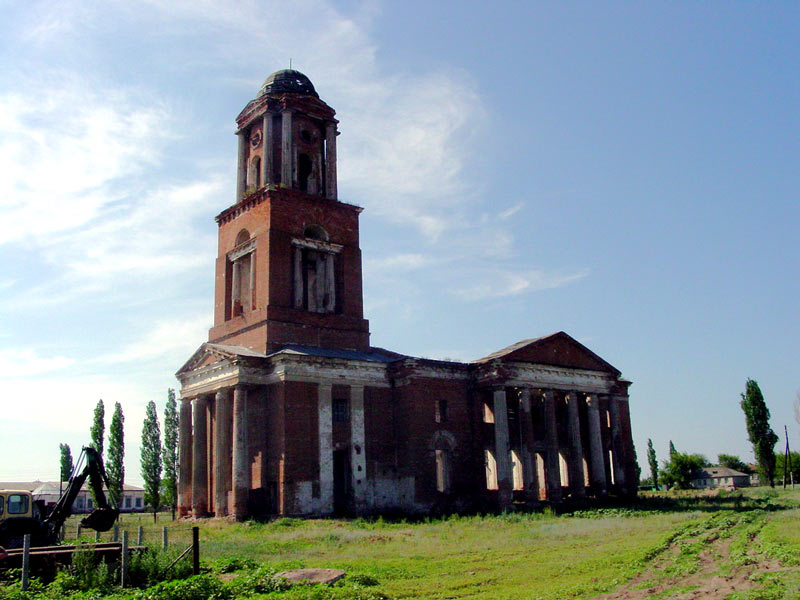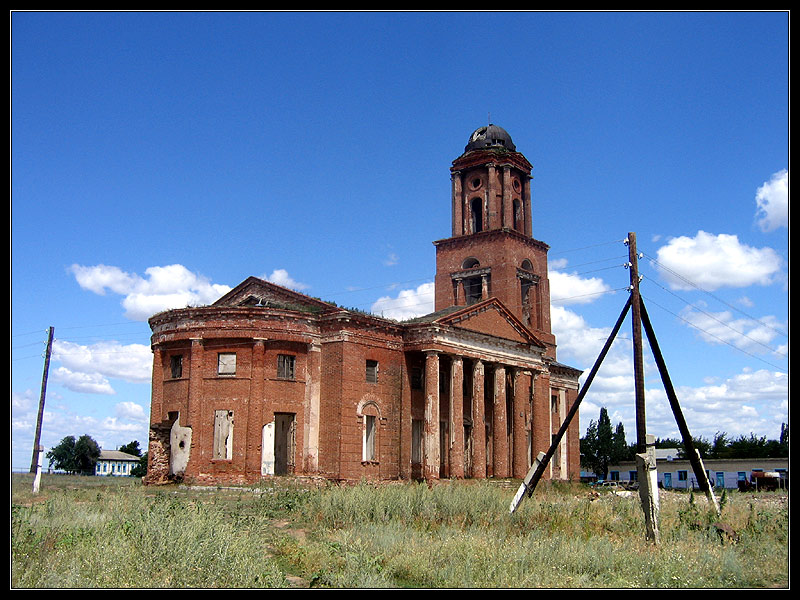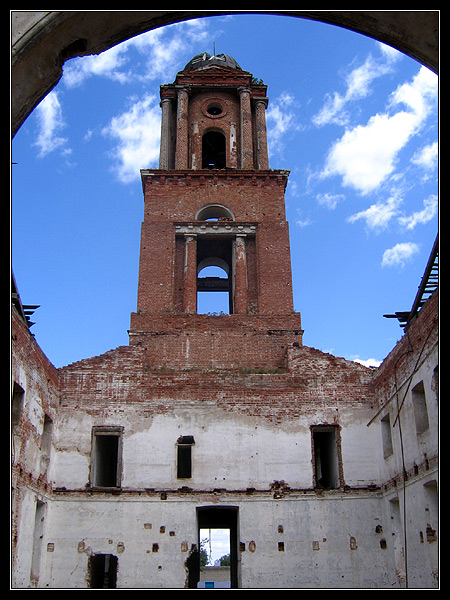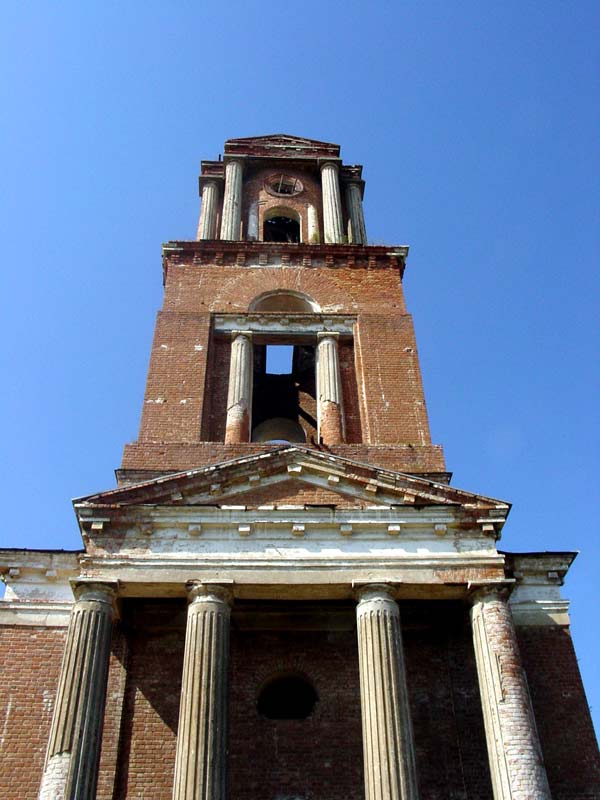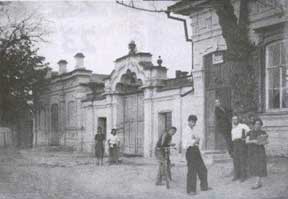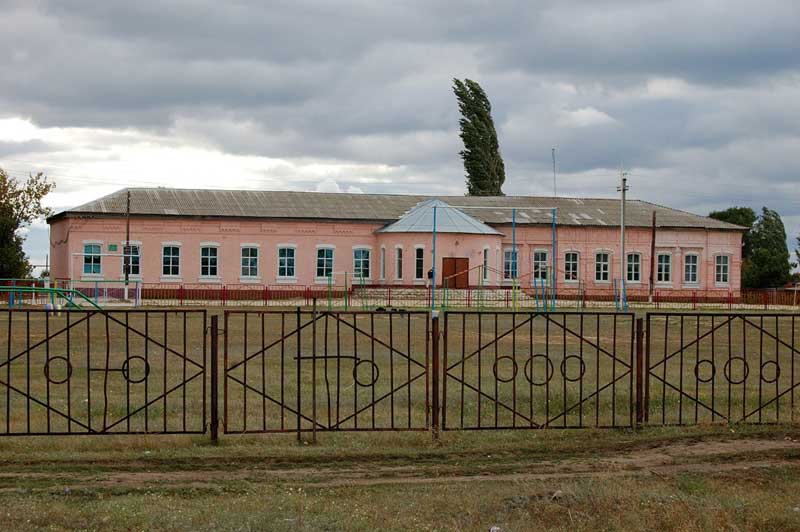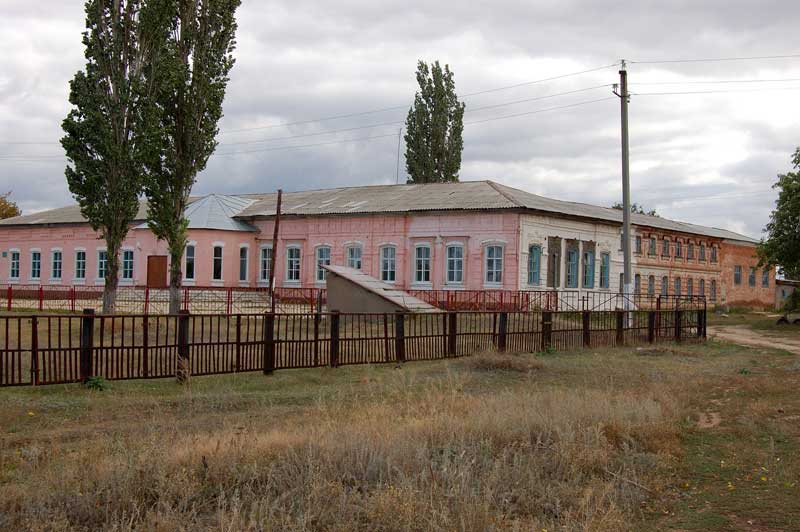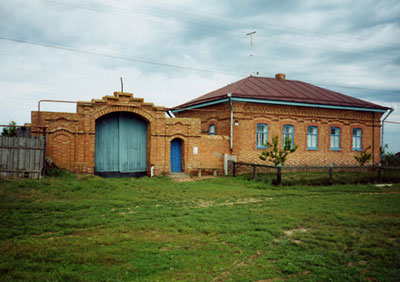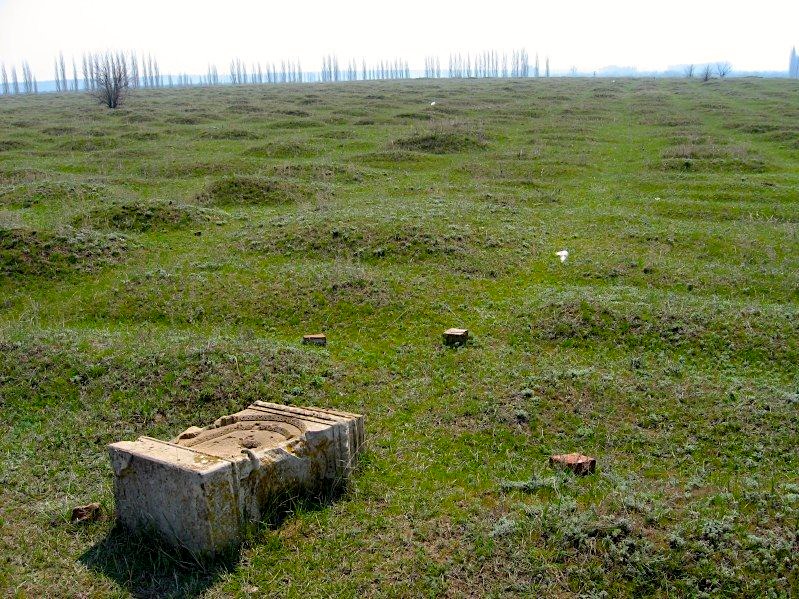The Warenburg parish was founded in 1770. In 1843, a new church building was constructed of brick by architects and artisans from Germany and Latvia. It was built in the Kontor Style, originally painted completely white on the exterior, and is said to have seated 1,200 worshipers. The interior was painted white and blue. Above the altar in gilded letters was written "Ehre Gott in der Hohe" ("Glory to God in the Highest"). A balcony held a magnificent organ, and three crystal chandeliers hung from the dome above the sanctuary. The church was heated by three cast-iron furnaces. Around the church was a park.
In 1910, the community discussed scraping the stucco off the building, all the way down to just a shell.
In November 1913, church officials decided to make the tower taller and more architecturally integrated with the rest of the building and also remove the little dome over the sacristy. The renovation included creation of a niche for the placement of an altar. To celebrate the renovation, they held a public event when they positioned the cross on the top of the new tower on August 10, 1914. During the same years, they also invested in new chandeliers, new altar paintings, and pieces of new altarware.
After the closure of the church in 1932, the building was used as a community entertainment center. The gilded praise to God was replaced by a red-lettered "Die Buhne ist der Spiegel des Lebens" ("The Stage Mirrors Life"). The furnaces broke and were removed. In 1939, the building was abandoned. In 1943, the building was used as a prison workshop and the prisoners worked on tractors beneath the dome.
Warenburg was founded as a Lutheran colony on 12 May 1767 by LeRoy & Pictet with colonists from Darmstadt, Brandenburg, Prussia, Württemberg, and Holstein.
In 1770, Warenburg was looted during the Pugachev raids on the area.
In 1876, immigration to North American began with the departure of 17 people.
A Congress of representatives from the colonies on the Wiesenseite was held in Warenburg 24-27 February 1918. From 4-8 January 1919, there was an anti-Bolshevik uprising held in Warenburg against the government's requisitioning of food.
|
Year
|
Households
|
Population
|
||
|---|---|---|---|---|
|
Total
|
Male
|
Female
|
||
| 1767 |
|
543
|
|
|
| 1769 |
149
|
524
|
290
|
234
|
| 1773 |
145
|
579
|
327
|
252
|
| 1788 |
101
|
521
|
261
|
260
|
| 1798 |
122
|
672
|
344
|
328
|
| 1816 |
143
|
956
|
492
|
464
|
| 1834 |
220
|
1,766
|
867
|
899
|
| 1850 |
269
|
2,836
|
1,411
|
1,425
|
| 1857 |
303
|
2,377
|
1,685
|
1,692
|
| 1859 |
320
|
3,491
|
1,752
|
1,739
|
| 1883 |
|
5,146
|
|
|
| 1889 |
|
5,608
|
|
|
| 1894 |
|
|
|
|
| 1897 |
|
5,279*
|
2,611
|
2,668
|
| 1904 |
|
8,074
|
|
|
| 1910 |
784
|
8,340
|
4,167
|
4,173
|
| 1912 |
|
8,312
|
|
|
| 1920 |
1,017**
|
6,697
|
|
|
| 1922 |
|
4,848
|
|
|
| 1923 |
|
4,638
|
|
|
| 1926*** |
860
|
4,898
|
2,322
|
2,576
|
| 1931 |
|
5,217****
|
|
|
*Of whom 5,216 were German.
**Of which 1,005 households were German.
***Of whom 4,795 (2,269 male & 2,526 female) were German living in 841 households.
****Of whom 5,170 were German.
Lutheran
Amburger, Erik. Die Pastoren der evangelischen Kirchen Rußlands (Lüneburg, Germany: Institut Nordostdeutsches Kulturwerk, 1998): 141.
Beratz, Gottieb. The German colonies on the Lower Volga, their origin and early development: a memorial for the 150th anniversary of the arrival of the first German settlers on the Volga, 29 June 1764 . Translated by Adam Giesinger (Lincoln, NE: American Historical Society of Germans from Russia, 1991): 353.
Diesendorf, V.F. Die Deutschen Russlands : Siedlungen und Siedlungsgebiete : Lexicon . Moscow, 2006.
Dietz, Jacob E. History of the Volga German Colonists . Lincoln, NE: American Historical Society of Germans from Russia, 2005.
Kisling, Richard. "Church Chronicle".
Klaus, A.A. Our Colonies . Saint Petersburg, Russia, 1869.
List of the Populated Places of the Samara Province . Samara, Russia, 1910.
Orlov, Gregorii. Report of Conditions of Settlements on the Volga to Catherine II , 14 February 1769.
Pallas, P.S. Reise durch verschiedene Provinzen des Russischen Reichs. Theil 3,2, Reise aus Sibirien zurueck an die Wolga im 1773sten Jahr (St. Petersburg: Kaiserl. Academie der Wissenschaften, 1776): 609.
Pleve, Igor R. The German Colonies on the Volga: The Second Half of the Eighteenth Century , translated by Richard Rye (Lincoln, NE: American Historical Society of Germans from Russia, 2001): 319.
Preliminary Results of the Soviet Census of 1926 on the Volga German Autonomous Soviet Socialist Republic (Pokrovsk, 1927): 28-83.
Schnurr, Joseph. Die Kirchen und das religiöse Leben der Russlanddeutschen Evangelischer Teil (Stuttgart: AER Verlag Landsmannschaft der Deutschen aus Rußland, 1978): 196.
"Settlements in the 1897 Census." Journal of the American Historical Society of Germans from Russia (Winter, 1990): 17.
Warenburg (wolgadeutsche.net) - in Russian
Warenburg Marriage Records 1826-1840 (AHSGR)
Warenburg 1798 Census (AHSGR)
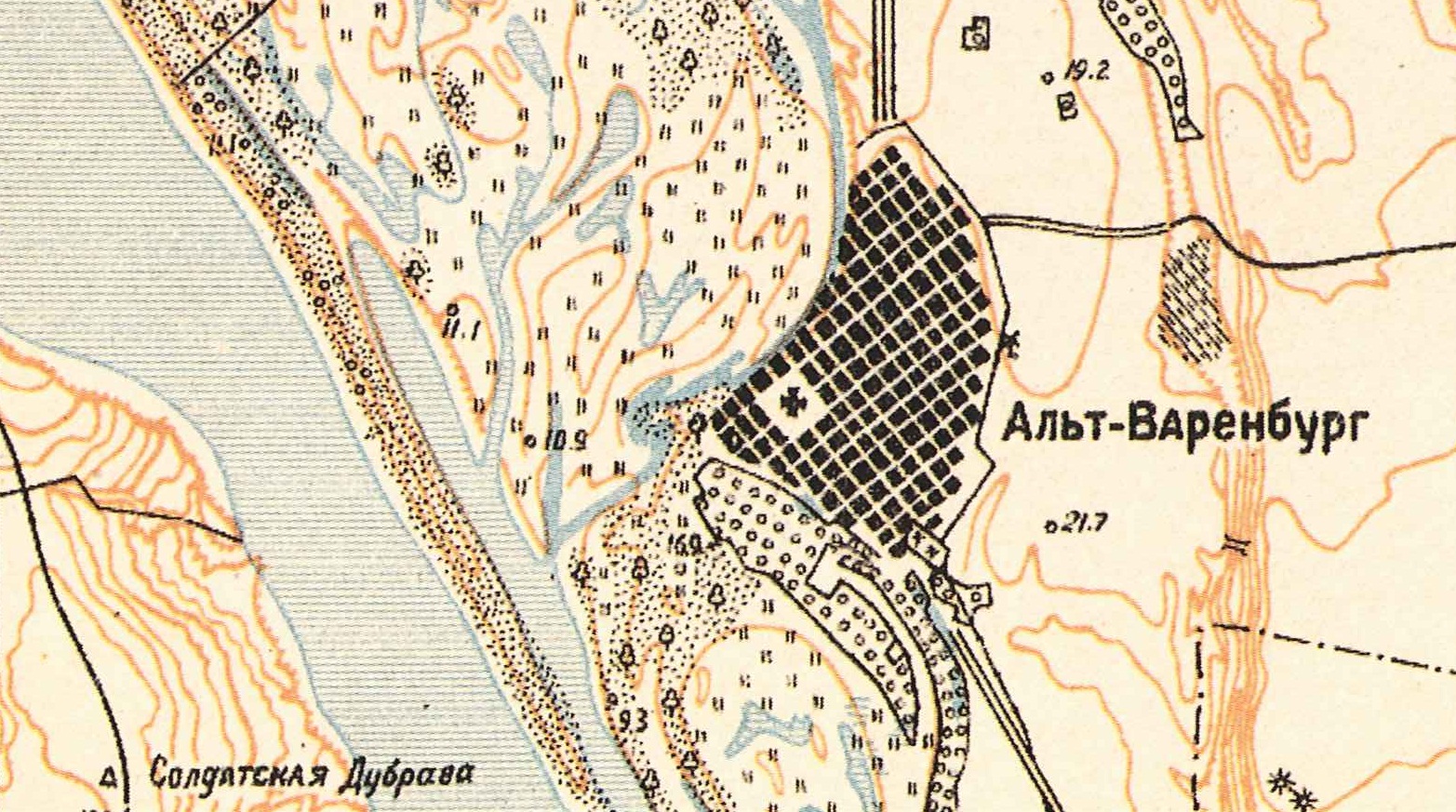
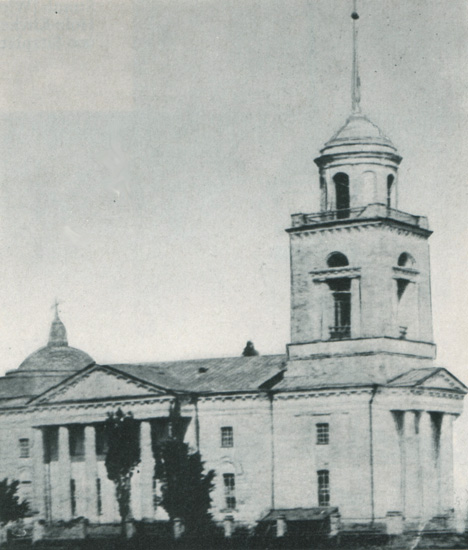
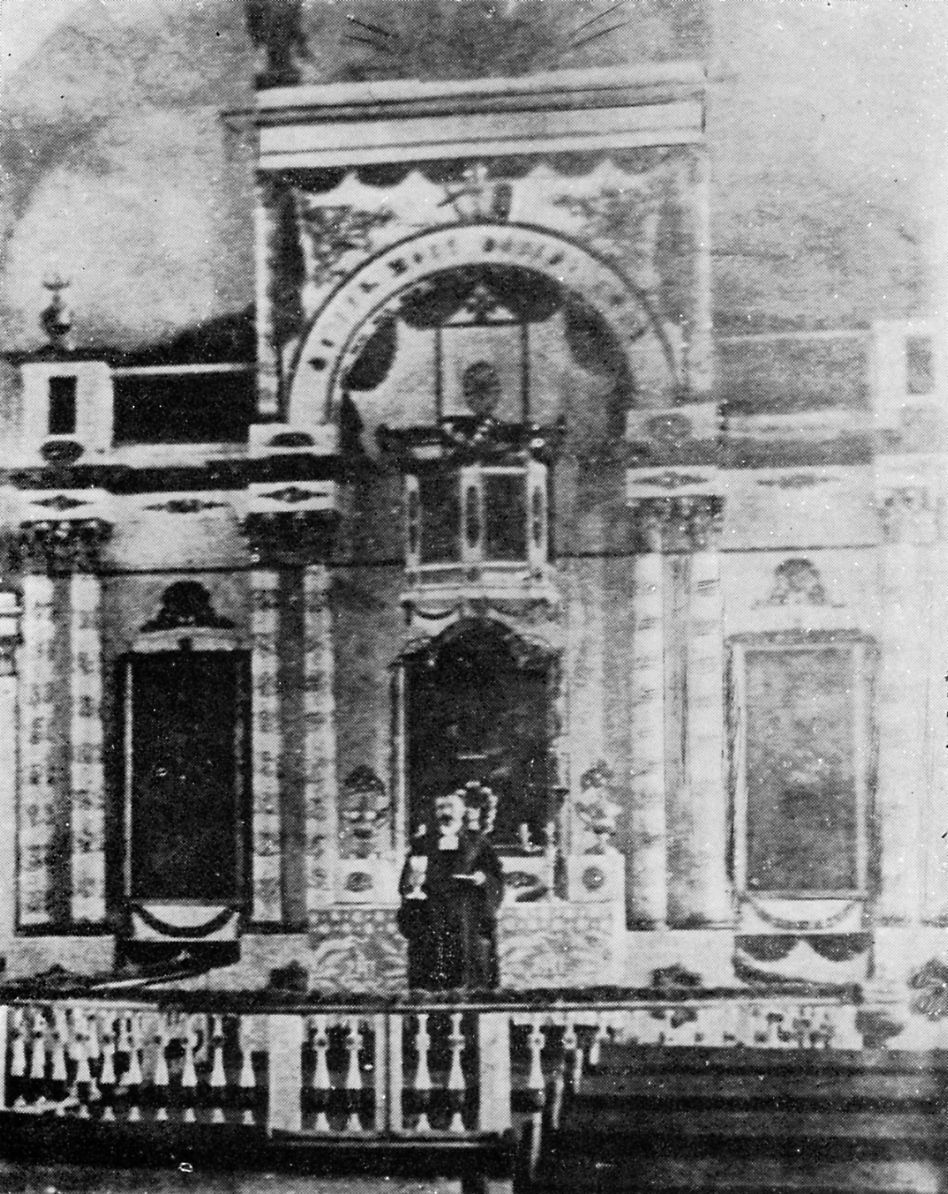
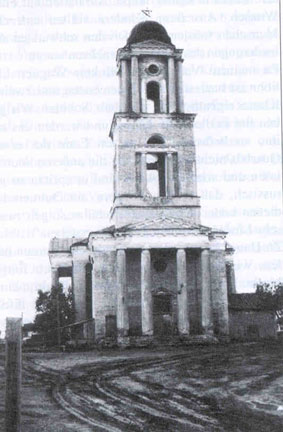
![Warenburg street scene showing Lutheran Church at the end. [This photo is often mis-identified as showing Orlovskaya.] Source: Heimatbuch der Deutschen aus Rußland, 1972. Warenburg street scene showing Lutheran Church at the end. [This photo is often mis-identified as showing Orlovskaya.] Source: Heimatbuch der Deutschen aus Rußland, 1972.](/sites/default/files/colony_images/warenburg_street.jpg)
